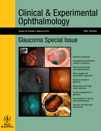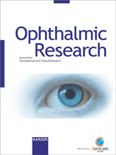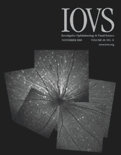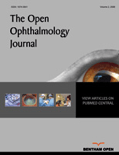
Eye and Brain
Scope & Guideline
Shedding light on the cellular mechanisms of sight.
Introduction
Aims and Scopes
- Neuro-Ophthalmology:
The journal publishes research on neuro-ophthalmological disorders, examining how neurological diseases manifest through visual symptoms and the underlying mechanisms. - Retinal Health and Disease:
Research on retinal conditions, including glaucoma and optic nerve diseases, is a core focus, emphasizing the need for understanding retinal degeneration and its links to systemic health. - Visual Pathway Analysis:
The journal explores the visual pathways from the retina to the brain, investigating how disruptions in these pathways affect vision and contribute to neurological diseases. - Innovative Diagnostic Techniques:
There is an emphasis on novel diagnostic methods, including advanced imaging techniques and electrophysiological assessments to better understand and diagnose ocular and neurological conditions. - Interdisciplinary Perspectives:
The journal encourages interdisciplinary research that integrates ophthalmology with neurology, psychology, and other fields to provide a comprehensive view of eye-brain interactions.
Trending and Emerging
- Glaucoma as a Neurodegenerative Disease:
There is a growing body of research framing glaucoma within the context of neurodegeneration, suggesting that understanding its pathophysiology may provide insights into broader neurodegenerative processes. - Retinal Biomarkers for Neurological Conditions:
Emerging studies are increasingly exploring the use of retinal imaging and biomarkers as indicators of neurological health, particularly in conditions like Alzheimer's and multiple sclerosis. - Neuromodulation and Ocular Function:
Research into how neuromodulators affect retinal and visual processing is gaining traction, indicating a significant interest in the biochemical pathways that underlie visual perception. - Impact of Systemic Conditions on Eye Health:
There is heightened interest in the relationship between systemic health factors, such as diabetes and cardiovascular diseases, and their effects on ocular conditions and visual function. - Innovative Therapeutic Approaches:
The exploration of novel therapeutic strategies, including gene therapy and electrical stimulation techniques for retinal health, is becoming a prominent theme within the journal's scope.
Declining or Waning
- General Neuro-Ophthalmological Reviews:
There appears to be a decreasing trend in broad review articles that summarize general neuro-ophthalmological topics, with a shift towards more specialized studies. - Traditional Visual Field Testing:
Research focusing solely on traditional visual field testing techniques has diminished, possibly due to advancements in technology and the need for more dynamic assessments. - Basic Ocular Conditions:
The journal has shifted away from publishing studies on common ocular conditions without a neurological link, favoring research that connects ocular health with neurological implications. - Age-Related Conditions without Neurological Context:
Papers focusing on age-related ocular conditions that do not explore the neurological aspects are becoming less prevalent, as the journal emphasizes the interplay between aging, vision, and brain health. - Historical Perspectives:
There seems to be a reduction in articles that delve into historical perspectives or legacy studies in neuro-ophthalmology, as the focus shifts towards current and future research.
Similar Journals

Augenheilkunde Up2date
Unveiling the Latest in Eye Health Developments.Augenheilkunde Up2date is a pivotal journal in the field of ophthalmology, published by GEORG THIEME VERLAG KG, a renowned publisher known for its commitment to advancing medical knowledge. With its ISSN 1616-9719 and E-ISSN 1616-9735, this journal serves as a vital resource for researchers, professionals, and students interested in the latest developments and nuanced discussions in eye health. Although not available as open access, its curated content offers significant insights into contemporary research, clinical practices, and emerging trends in ophthalmology, thus promoting the continuous professional development of its readers. There is an emphasis on providing comprehensive reviews that encapsulate the pertinent advancements in the field, making it an essential publication for those aiming to enhance their expertise in eye care and vision science.

Asia-Pacific Journal of Ophthalmology
Exploring the frontiers of eye health research.Asia-Pacific Journal of Ophthalmology is a distinguished open access journal published by the Asia-Pacific Academy of Ophthalmology (APAO), specializing in the latest advancements and research in ophthalmology. Since its inception in 2013, this journal has established itself as a vital platform for disseminating innovative findings and clinical practices across the Asia-Pacific region and beyond. With an impressive Scopus ranking of #10 out of 137 in the field of Medicine (Ophthalmology), placing it in the 93rd percentile, it garners significant attention and respect within the academic community. Currently holding a Q1 categorization in both Medicine (miscellaneous) and Ophthalmology, the journal embraces a broad scope that encompasses clinical studies, experimental research, and reviews aimed at enhancing the understanding and management of eye health. Its open access model since 2019 ensures that all published works are freely accessible, promoting greater collaboration and knowledge sharing among researchers, clinicians, and students. Situated in the Netherlands with a prominent address in Hong Kong, the journal serves as an essential resource for anyone dedicated to the field of ophthalmology.

CLINICAL AND EXPERIMENTAL OPHTHALMOLOGY
Shaping the Future of Ophthalmology TogetherCLINICAL AND EXPERIMENTAL OPHTHALMOLOGY is a leading peer-reviewed journal published by Wiley, renowned for its commitment to advancing the field of ophthalmology. With an impressive impact factor reflecting its high-quality research contributions, this journal is ranked in the Q1 category both in Medicine (miscellaneous) and Ophthalmology, signifying its crucial role in shaping contemporary ophthalmic research. It boasts a remarkable position in the Scopus Ranks, standing at Rank #13 out of 137 in the field of Medicine and Ophthalmology, placing it within the 90th percentile among its peers. Having been in circulation since 1979, this journal encompasses a broad scope of topics that aim to disseminate groundbreaking findings and stimulate dialogue among researchers, clinicians, and students alike. It is easily accessible to a global audience, embodying the principles of open access, making valuable research available to all. For anyone seeking to stay at the forefront of ophthalmology, CLINICAL AND EXPERIMENTAL OPHTHALMOLOGY is an indispensable resource that fosters knowledge and innovation in the ever-evolving landscape of eye care.

Journal of Eye Movement Research
Illuminating the Path of Eye Movement InsightsJournal of Eye Movement Research is a pivotal open-access journal dedicated to the exploration of eye movement science and its implications across various disciplines, including ophthalmology and neuroscience. Published by INT GROUP EYE MOVEMENT RESEARCH, this journal has been a beacon of knowledge since its inception, offering a platform for researchers and professionals to share their findings and insights in an impactful and timely manner. With an impressive 2023 categorization in Q2 for Ophthalmology and Q3 for Sensory Systems, it reflects a strong reputation within the academic community, ranking 59th out of 137 in Ophthalmology and 29th out of 42 in Sensory Systems according to Scopus metrics. The journal is committed to facilitating open access research, having adopted this model since 2007, which allows for wider dissemination of scholarly work and fosters collaboration among academics worldwide. Located in Switzerland, the Journal of Eye Movement Research not only contributes to the understanding of eye movement behavior but also influences practical applications in clinical and educational environments, making it an essential resource for researchers, healthcare professionals, and students alike.

DOCUMENTA OPHTHALMOLOGICA
Illuminating Insights: Your Gateway to Cutting-Edge Ophthalmic ResearchDOCUMENTA OPHTHALMOLOGICA is a prestigious journal published by SPRINGER, dedicated to advancing the field of ophthalmology since its inception in 1938. With a robust ISSN of 0012-4486 and an E-ISSN of 1573-2622, the journal has consistently delivered high-quality research, meriting a Q2 classification in Ophthalmology and a Q3 classification in both Physiology and Sensory Systems as of 2023. Located in the Netherlands at VAN GODEWIJCKSTRAAT 30, 3311 GZ DORDRECHT, DOCUMENTA OPHTHALMOLOGICA aims to publish rigorous studies, reviews, and innovations that bridge clinical practice and research. Although it does not currently offer Open Access options, the journal remains vital for researchers, professionals, and students seeking to stay abreast of developments in visual sciences and contribute to foundational knowledge in these domains.

OPHTHALMIC RESEARCH
Fostering Collaboration for Groundbreaking Vision ScienceOphthalmic Research, with ISSN 0030-3747 and E-ISSN 1423-0259, is a distinguished peer-reviewed journal published by Karger in Switzerland. Established in 1970, this journal serves as a vital resource for exploration and dissemination of knowledge within the fields of Ophthalmology, Cellular and Molecular Neuroscience, and Sensory Systems, maintaining its relevance through its convergence into modern research methodologies leading up to 2024. With impressive rankings in 2023, it holds a Q2 quartile in both Ophthalmology and Medicine (miscellaneous), reflecting its significant contribution to the academic community, alongside Scopus ranks that position it favorably in the competitive landscape of medical and neuroscientific literature. Although not open access, the journal ensures that high-quality research remains accessible to its readership, which includes researchers, professionals, and students eager to stay at the forefront of ophthalmic advancements. By fostering interdisciplinary collaboration and facilitating high-level discourse, Ophthalmic Research is pivotal for those committed to advancing the future of eye care and vision sciences.

INVESTIGATIVE OPHTHALMOLOGY & VISUAL SCIENCE
Elevating knowledge in the realm of sight.Investigative Ophthalmology & Visual Science (IOVS) is a leading academic journal published by the Association for Research in Vision and Ophthalmology, dedicated to advancing the field of ophthalmology and visual science. With an impressive impact factor and ranking in the Q1 category for both Ophthalmology and Sensory Systems, IOVS is well-respected for disseminating cutting-edge research and innovative discoveries. Established in 1977, this Open Access journal allows for broad accessibility to pioneering studies, fostering collaboration among researchers, clinicians, and students. The journal has consistently maintained high visibility in the academic community, evidenced by its robust rankings in Scopus, including Rank #16 in Ophthalmology. As it continues to pave the way for future developments in the understanding and treatment of ocular diseases, IOVS serves as an invaluable resource for those immersed in the complex field of visual science.

VISION RESEARCH
Transforming understanding through vision research.VISION RESEARCH, published by PERGAMON-ELSEVIER SCIENCE LTD, is a leading journal in the field of visual sciences, focusing on the diverse aspects of ophthalmology and sensory systems. With a rich publication history dating from 1961 and extending into 2024, this journal has become a cornerstone for researchers and practitioners alike, offering critical insights into vision science. The journal holds a commendable Q2 ranking in Ophthalmology and a Q3 ranking in Sensory Systems, evidencing its significant contribution to these fields. VISION RESEARCH also boasts a respectable Scopus ranking, placing it in the 66th percentile for Ophthalmology and 46th percentile for Neuroscience. Although it is not an Open Access journal, readers can access its impactful research through various academic institutions. With its emphasis on innovative research and developments in understanding visual perception, VISION RESEARCH is an essential resource for scientists, clinicians, and students dedicated to advancing the understanding of vision and its associated mechanisms.

Open Ophthalmology Journal
Advancing ocular health through open-access research.The Open Ophthalmology Journal, published by Bentham Science Publishers Ltd, is a vital resource in the field of ophthalmology, dedicated to advancing knowledge through open-access research. With an ISSN of 1874-3641, it offers a platform for the dissemination of innovative studies from 2011 to 2024, focusing on the latest developments in eye care and vision science. Despite being categorized in the lower quartile (Q4) according to the 2023 rankings, and holding a position in the Scopus Ricks at 113 out of 137 in the ophthalmology domain, the journal serves as a valuable outlet for emerging scholars and seasoned researchers alike to share their findings. The journal's commitment to accessibility ensures that its content is available to a broad audience, promoting collaboration and knowledge exchange. Located in the Netherlands, The Open Ophthalmology Journal aspires to become a cornerstone for those passionate about understanding and improving ocular health through rigorous scientific inquiry.

PROGRESS IN RETINAL AND EYE RESEARCH
Advancing the Frontiers of Vision SciencePROGRESS IN RETINAL AND EYE RESEARCH, published by PERGAMON-ELSEVIER SCIENCE LTD, is a premier journal dedicated to the advancement of knowledge in the fields of ophthalmology and sensory systems. With an impressive impact factor and a Q1 category ranking in both Ophthalmology and Sensory Systems as of 2023, this journal exemplifies excellence in research dissemination. Given its stature, it ranks #1 out of 137 in Ophthalmology and #1 out of 42 in Neuroscience - Sensory Systems, placing it within the top percentile of scientific publications in these domains. The journal has been actively contributing to the field since its inception in 1994 and continues to be a vital resource for researchers, clinicians, and students seeking the latest insights and breakthroughs in the understanding of retinal diseases and eye health. While it maintains a traditional subscription model, the journal remains committed to publishing high-quality, peer-reviewed articles that drive forward the frontiers of eye research and therapeutic innovation. With its strong scientific rigor and a vast array of articles, PROGRESS IN RETINAL AND EYE RESEARCH is indispensable for anyone invested in the study of visual sciences.